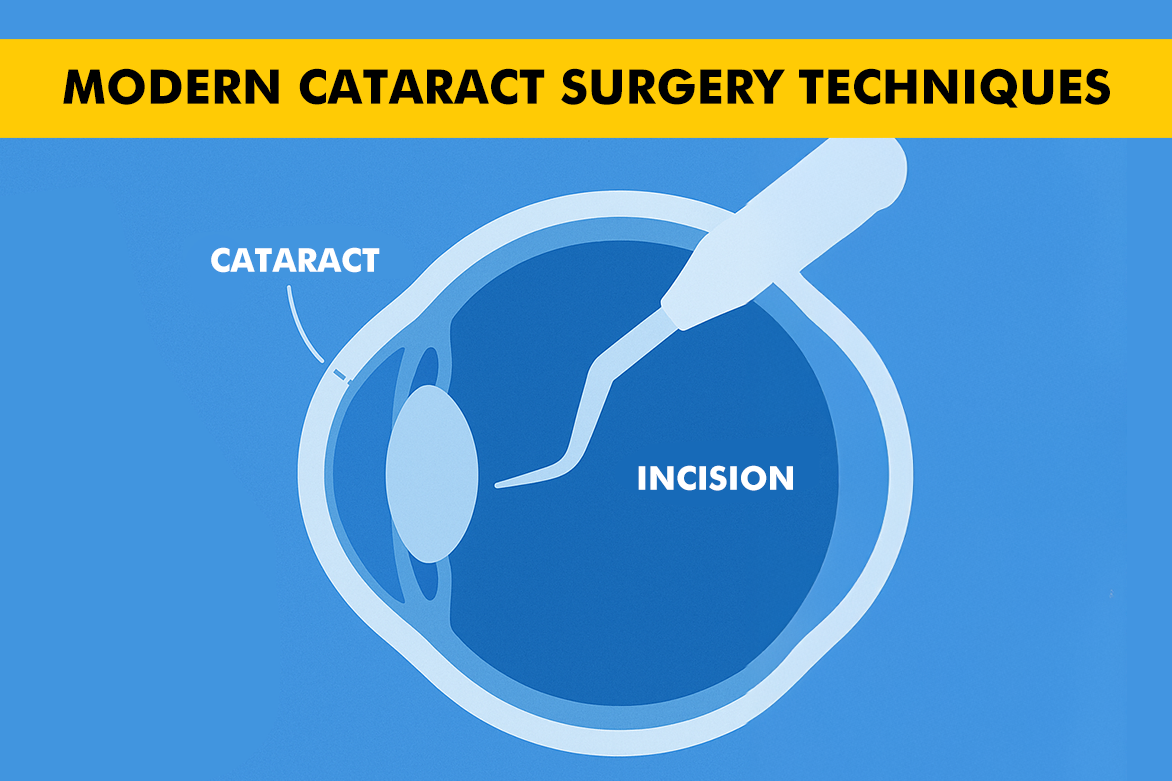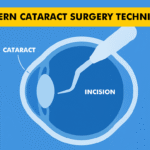Table of Contents
- Introduction
- Understanding Cataracts: What Causes Them and When Is Surgery Needed
- Evolution of Cataract Surgery Techniques
- Phacoemulsification Cataract Surgery
- Micro-Incision Cataract Surgery
- Femtosecond Laser-Assisted Cataract Surgery
- The Role of Intraocular Lenses After Cataract Surgery
- Potential Risks of Cataract Surgery
- Conclusion
- FAQs
Introduction
Cataracts are a leading cause of vision loss globally, affecting over 20 million people in India alone. While most common in adults over 60, cataracts can also arise from injuries, congenital conditions, or prolonged steroid use. With rising life expectancy, the demand for advanced cataract solutions is increasing. Understanding modern surgery options is key for patients seeking clarity and confidence in their care journey.
Did You Know?
Cataract surgery procedure is one of the most frequently performed surgeries worldwide, with a high success rate exceeding 98%. Early detection is crucial: Timely Cataract surgery can restore sight and prevent blindness.
Understanding Cataracts: What Causes Them and When Is Surgery Needed
Cataracts cause the lens of the eye to become clouded, leading to blurred, faded, or yellowed vision. Common causes include:
- Aging: Most cases develop slowly with age.
- Diabetes: Increases risk and speeds up cataract progression.
- Excessive Sunlight (UV exposure): Damages lens proteins over time.
- Smoking: Releases toxins that accelerate cataract formation.
- Steroid medications: Long-term use can trigger changes.
- Eye injuries or inflammation
Symptoms indicating surgery might be needed include
- Trouble with night vision or glare from headlights
- Difficulty reading or recognizing faces
- Frequent changes in glasses prescription
Evolution of Cataract Surgery Techniques
Cataract surgery has truly come a long way, what was once a daunting, prolonged process is now a quick, reliable procedure with outstanding outcomes. Today’s surgery combines cutting-edge technology and expert skill to deliver clearer vision faster and more comfortably than ever before.
| Era | Incision Size | Recovery Time | Visual Outcome |
| Early 1900s | 10-12 mm | Weeks | Variable, slow recovery |
| 1980s-2000s | 2.8-3.2 mm | Days to weeks | Steady improvement |
| Modern Era | <2 mm | 1-3 days (typical) | Immediate, clear vision |
Hey Advancements
- Imaging breakthroughs: High-definition microscopes and eye scanners enhance surgical precision.
- Micro-incision techniques: Smaller cuts mean less trauma to the eye and rarely a need for sutures.
- Rapid restoration: Patients often resume daily activities within 1-2 days, and many see a dramatic improvement right away.
- Enhanced safety: Innovations minimize risks, allowing for even complex cases to be handled with great care.
Phacoemulsification Cataract Surgery
Traditional phacoemulsification remains a standard worldwide. Here’s why it’s so effective:
- Incision size: About 2.2–2.8 mm, barely visible to the naked eye
- Local anesthesia makes the process comfortable
- Most people notice strikingly better vision in just 1-2 days
- Restores color, brightness, and clarity in life
Micro-Incision Cataract Surgery
Micro-Incision Cataract Surgery (MICS) refines the process even further. Surgeons use some of the smallest tools in ophthalmology, incisions under 2 mm, resulting in remarkably gentle surgery.
- Reduced risk of infection and inflammation
- Less surgical swelling and minimal trauma to eye tissue
>Who benefits most?
- Those prone to eye irritation or dry eyes
- Patients seeking the fastest recovery
- People with active lifestyles or urgent visual demands
Femtosecond Laser-Assisted Cataract Surgery
Femtosecond Laser Assisted Cataract Surgery (FLACS) is the ultra-modern approach, imagine lasers replacing blades for a new level of accuracy. This is the choice for patients who want a truly customized surgical experience.
- Highly precise, computer-guided incisions and lens softening
- Even tough, dense cataracts can be precisely managed
- Can optimize vision correction (especially for astigmatism or prior surgeries)
- Often leads to less swelling and even quicker visual recovery
- New studies reveal over 90% of FLACS patients have 20/20 or better vision post-op.
No matter which technique your doctor recommends, modern cataract surgeries are customized for your eyes, comfort, and best results.
The Role of Intraocular Lenses After Cataract Surgery
Intraocular lenses (IOLs) are the key to restoring vision after cataract removal. It is implanted by replacing the eye’s natural cataract lens. It is of many kinds, developed to suit various individual or eye condition needs.
- Monofocal IOLs: Provide clear vision at a single distance (near or far). Glasses
- Multifocal IOLs: Allow for both distance and near vision, reducing dependence on glasses
- Toric IOLs: Correct astigmatism, providing sharper images
Discuss your lifestyle (e.g., driving, reading, hobbies) with your surgeon to select the best IOL for your goals.
Potential Risks of Cataract Surgery
While modern cataract surgery is extremely safe, it’s important to be aware of possible risks:
- Infection/Inflammation: Rare; minimized with antibiotics
- Posterior Capsule Opacification: Treated painlessly with laser
- Retinal Detachment: Very rare, but needs immediate care
- Vision Fluctuations: Usually temporary
Fact:
- The complication rate is <2% in experienced hands.
- Most side effects are mild and resolve quickly with treatment.
What you can do:
- Follow post-surgery instructions
- Attend all follow-up appointments
- Report any sudden vision changes immediately
Conclusion
Today’s cataract surgery is among the safest and most reliable surgeries in medicine. By understanding your options, risks, and benefits, you can make informed choices and maximize your visual outcome.
With modern techniques, the right intraocular lens, and professional aftercare, cataract surgery can give a whole new perspective, restoring detail, color, and the joy of clear sight to everyday life.





